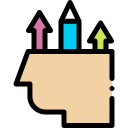Developing digital proficiency in English is increasingly vital in today’s connected world. As technology continues to evolve, the effective use of digital tools and resources in English can open doors to educational, professional, and personal growth. This page explores multifaceted strategies for enhancing digital skills and fluency in the English language. Whether you are a student, professional, or lifelong learner, these approaches can significantly improve your confidence and capabilities when navigating the digital landscape.
Effective Email Correspondence
Composing emails in English entails more than simply transmitting information; it involves structuring your message for clarity, selecting the appropriate level of formality, and ensuring your intent is unmistakable to the recipient. Digital proficiency here includes efficient use of subject lines, greetings, and closings, all while avoiding common linguistic pitfalls such as ambiguity or excessive jargon. By mastering these conventions, you can ensure your emails are read, understood, and acted upon—with positive results for both professional and personal interactions. Furthermore, knowing how to utilize built-in tools like grammar checks and templates can streamline your workflow while maintaining high standards of written English.

Navigating Professional Messaging Apps
In the corporate world, messaging tools such as Slack or Microsoft Teams have become indispensable for daily operations. Proficiency in English within these platforms involves adapting your language for various audiences, striking a balance between brevity and detail, and observing digital etiquette. Proper use of channels, direct messages, and threaded conversations requires not only technical skills but also the ability to interpret and craft concise, context-appropriate messages in English. This contributes to smooth collaboration, swift problem-solving, and a positive digital work environment. Mastery of these apps also includes utilizing language settings, automation bots, and search functions for increased efficiency.

Collaborating Through Digital Project Platforms
Project management tools like Trello, Asana, or Google Workspace demand a range of digital English skills, from clear task descriptions to effective feedback. Writing concise, actionable comments and updates ensures that all stakeholders remain informed and aligned. Proficiency here means understanding conventions for documenting progress, providing constructive criticism, and summarizing discussions—all while maintaining clarity and professionalism in your English language usage. This not only streamlines teamwork but also promotes inclusivity in multicultural and multilingual settings, making project completion more efficient and impactful.
Leveraging Online Learning Resources
01
Engaging with Interactive Language Platforms
Websites like Duolingo, Babbel, or Memrise are designed to make English language learning accessible and enjoyable through gamified modules and interactive lessons. These platforms blend digital literacy with language acquisition, reinforcing grammar, vocabulary, and pronunciation in a user-friendly environment. Digital proficiency encompasses selecting appropriate learning paths, setting achievable goals, and consistently reviewing progress through analytics features. The adaptive algorithms personalize content, ensuring that learners face just the right amount of challenge. As a result, users experience sustained engagement, improved retention, and steady fluency advancement.
02
Utilizing Massive Open Online Courses (MOOCs)
MOOCs provided by Coursera, edX, and similar providers offer courses covering English language skills as well as digital literacy. These structured programs, led by experts, include rigorous assessments, peer interaction, and multimedia elements that sharpen comprehension, critical thinking, and professional communication in English. Learners build digital proficiency by navigating virtual classrooms, participating in forums, and submitting assignments online. The global community within these courses enables exposure to diverse English usage and collaboration with peers from various backgrounds, further enhancing both technical and linguistic competencies.
03
Exploring Open Educational Resources (OERs)
OERs are freely accessible, high-quality teaching, learning, and research materials contributed by educators worldwide. Examples include lesson plans, eBooks, podcasts, and videos—often catered to different proficiency levels. Developing digital proficiency through these resources involves discovering, evaluating, and integrating materials into your study routine while cultivating discernment of source reliability and relevance. OERs also empower learners to contribute back, creating or adapting content for others, which further reinforces their command of digital English communication. This self-directed, resourceful approach is invaluable in lifelong learning environments.
Building Digital Literacy Through Content Creation
Blogging and Online Writing
Launching a personal or professional blog in English is a dynamic way to hone writing skills while learning web publishing basics. Crafting blog entries demands clear organization, audience awareness, and effective language use. Skills like keyword research, SEO optimization, and hyperlinking require digital know-how and precise English. By maintaining a consistent blogging schedule, reflecting on feedback, and analyzing site analytics, writers gain confidence and adaptability in both language and technical domains. Over time, the iterative process of planning, drafting, and revising posts leads to measurable growth in digital proficiency and written English excellence.

